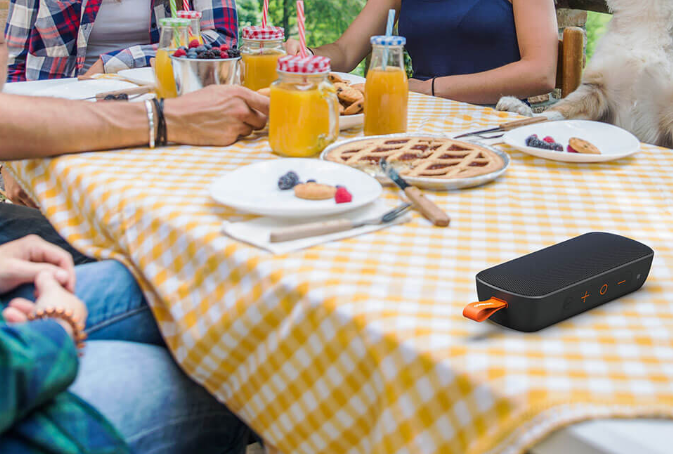We test Bluetooth speakers the way normal people live. We run every speaker through a rigorous process over the course of several days. That includes playing them in all sorts of scenarios, be it in the park or at the beach (for portables), in the listening room, or at the office, and playing back from our device library and streaming services like Spotify. We also test range, connection stability, and interference in areas with a lot of radio frequency interference (i.e. the Digital Trends offices).
Finally, we compare each speaker to some of our go-to models, both in their class and price point, as well as a level or two above to find out if they can punch above their weight.

These days, it seems like you can't turn around without knocking over a Bluetooth speaker. With so many to choose from, it can be hard to nail down which is best for your needs. The first things we recommend thinking about before deciding are how and where you'll be using your Bluetooth speaker.
If you're primarily using it indoors and leaving it there, for example, then the field of choices opens up dramatically in terms of size and durability considerations — you can go as big and feature-filled as your budget will allow.
If you're an on-the-go type, you're going to want to consider portability and ruggedness. There are plenty of portable Bluetooth speakers with durable rubber features that can withstand being dropped and banged around inside a backpack. And if your travels should take you to the great outdoors, poolside, or beachfront, consider getting a speaker with a good IP rating to stave off any water or dust. IP67, for example, will actually let you submerge the device for a short period of time (read below for more on that).
When it comes to sound features, give some thought to how you want to use your Bluetooth speaker. If you're fussy about sound, put sound quality at the top of the list. If you want something loud to fill a room at get-togethers, you may want to err on the bigger side, although there are several smaller speakers that pump out some volume, too, and even compact speakers that can be chained together and placed around the room for the ultimate in flexibility and a big sound.
The good news is that there are plenty of Bluetooth speakers to choose from that are bound to hit on every one of your priority needs, making it easier than ever to find the right fit.
Pairing (or Bluetooth pairing): When using Bluetooth speakers, pairing means the literal process of connecting wirelessly between your speaker and your specific device.
IPXX: IP stands for “Ingress Protection,” and this number serves as a rating for electronic devices. This first number represents exactly how resistant your tech is to dust; the second number measures water resistance. It’s a simple process to follow, and the higher the number, the most resistant it is to that environmental influence. For example, a device with an IP67 rating means that this device is dust-tight and can be submerged underwater for up to 1 meter, or about 3 feet, for 30 minutes. If you’re hoping to bring your Bluetooth speaker to the pool, lake, or anywhere near water, we recommend you consider only using devices with a rating of at least IPX7.
NFC: Shorthand for Near Field Communication, this oft-touted feature is actually quite limited when it comes to Bluetooth speakers, allowing select phones to pair with a speaker with a quick touch. Since pairing is often as simple as pressing a button, and speakers will be remembered by your device once paired, it's not seen as a must-have feature.
AptX: Another feature limited to phones and devices outside of Apple’s periphery, AptX is a codec (or group of codecs) said to allow Bluetooth streaming at “near CD quality” resolution. Apple products do not use AptX, but Android users may find it improves performance when paired with high-quality tracks and high-performance speakers. AptX Adaptive is the latest and greatest version of this codec, but both the source device and Bluetooth speaker must support it for you to get any benefit.
Passive radiator: This term represents a kind of driver that helps magnify bass within your speaker. If you have a sealed speaker enclosure, which means there are no portholes, a passive radiator essentially reacts to slight changes in the air pressure within the enclosure. Each fluctuation results in sound. Passive radiators do not have to be powered by amps. Furthermore, the device is often lighter than other traditional drivers or speakers because it comes with no magnet or voice coil. That production design saves you a bit of cash, creates a more compact and portable device, and upgrades your speaker’s overall sound.
Want to know more information about the best bluetooth speaker? feel free to contact us.